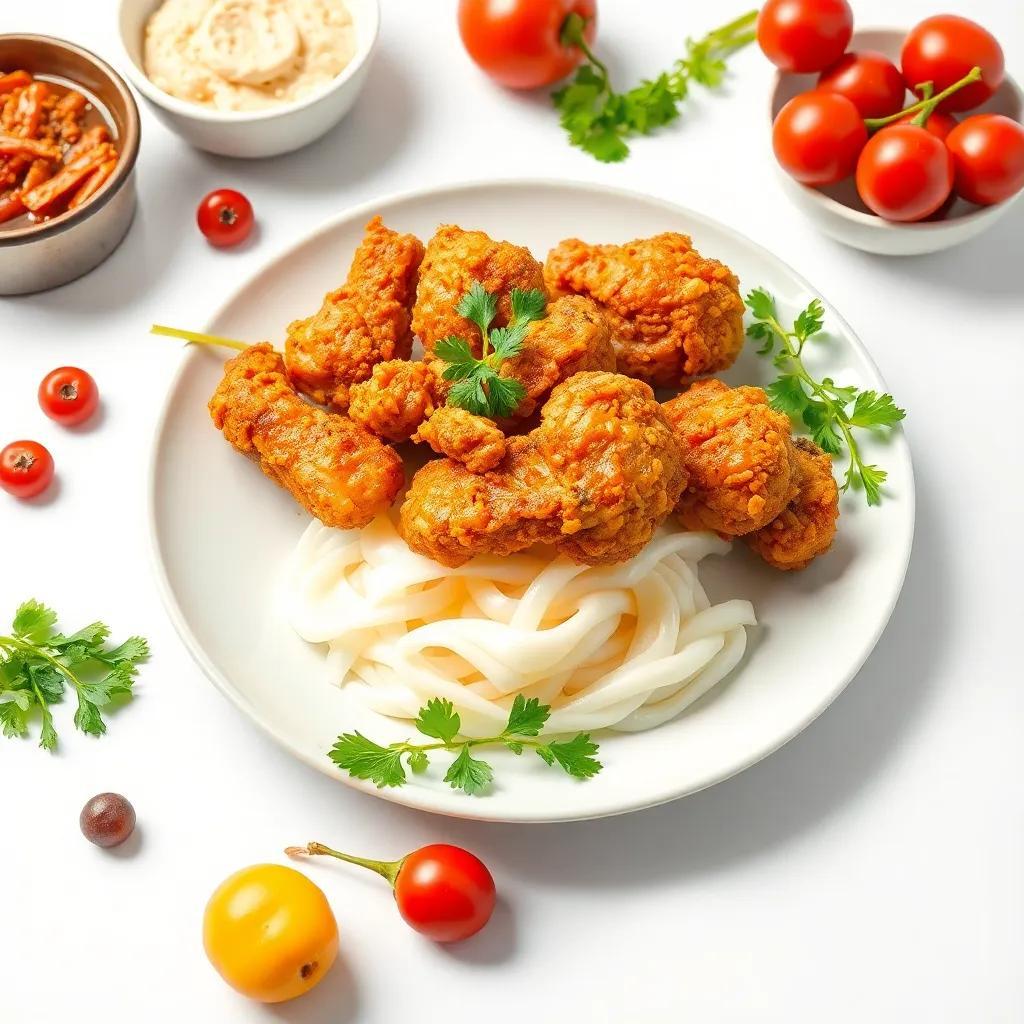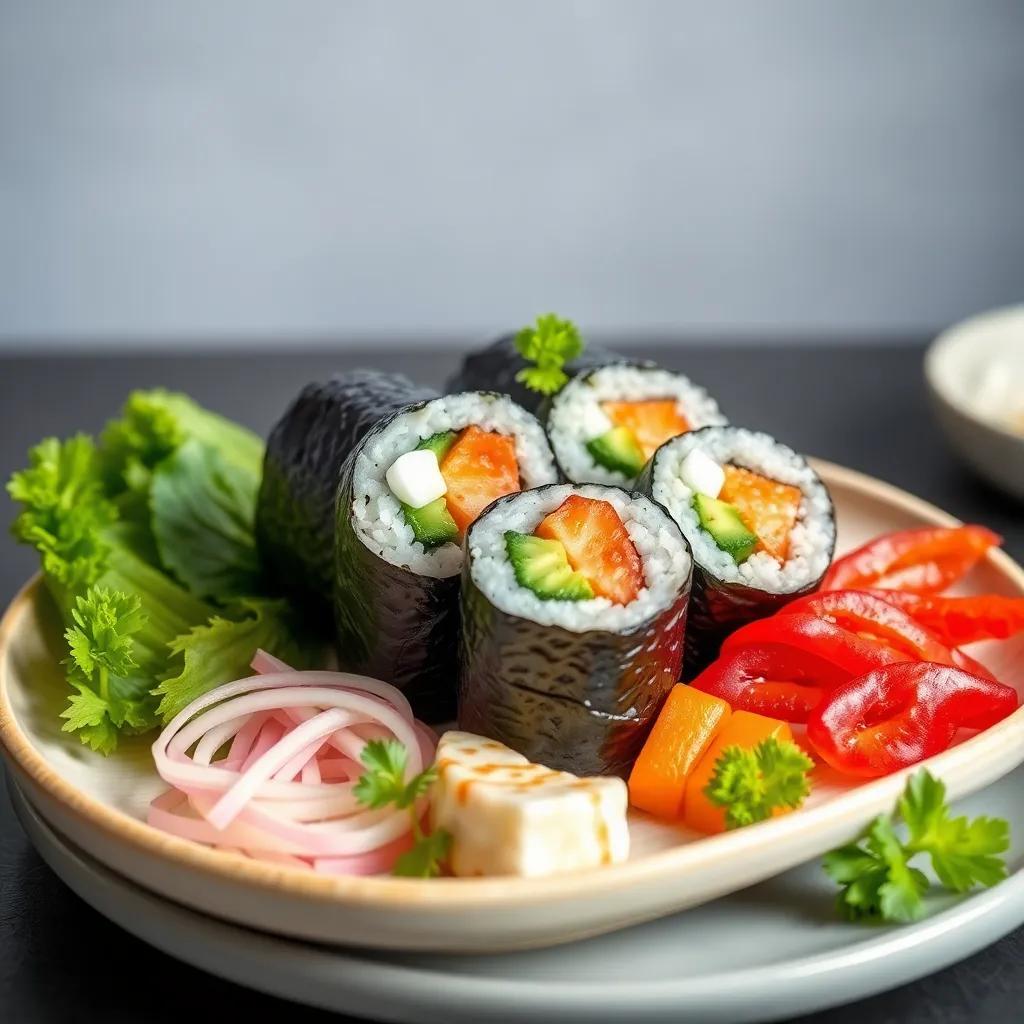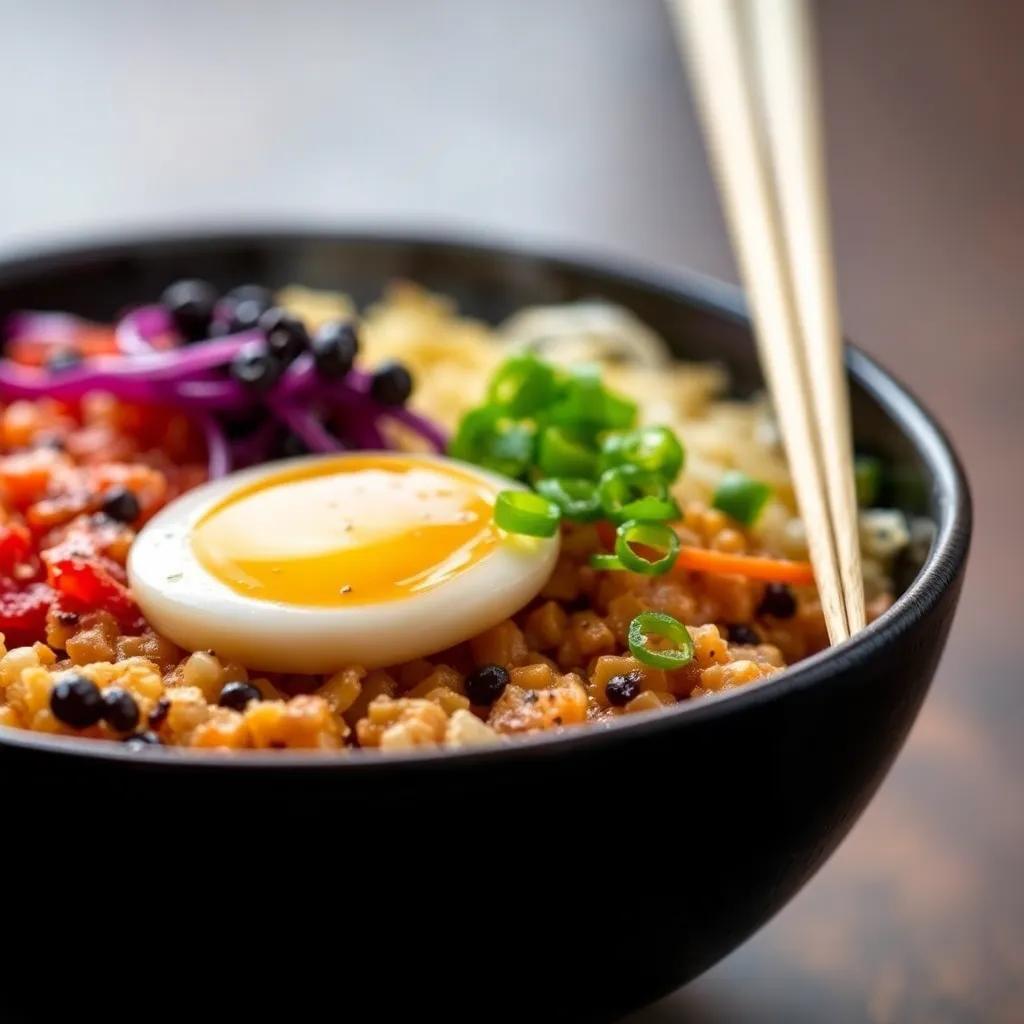Mastering Samgyeopsal: Easy Korean BBQ Pork for Flavor Fans
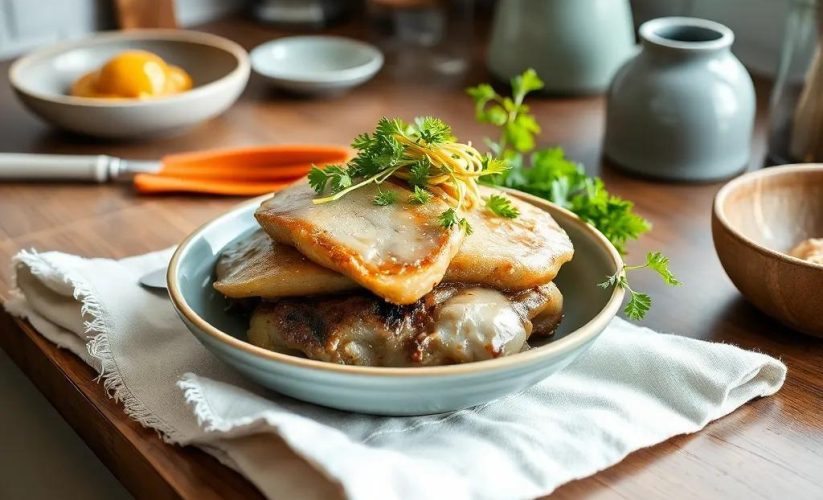
Mastering Samgyeopsal: Easy Korean BBQ Pork for Flavor Fans
🌍 Cuisine: Korean
⚙️ Difficulty: Easy
Ingredients
Nutrition Facts
450 kcal
Instructions
- Prepare the pork belly slices by cutting them into bite-sized strips if desired.
- In a bowl, mix together the soy sauce, sugar, gochujang, sesame oil, and Korean chili flakes to create a marinade.
- Add the pork belly slices into the marinade and toss well to coat. Let it marinate for 10 minutes while preheating the grill or pan.
- Heat a grill pan or skillet over medium-high heat. Once hot, add the marinated pork slices and garlic slices.
- Cook the pork, turning occasionally, until browned and cooked through, about 10 to 12 minutes.
- Season with salt and pepper to taste during the last few minutes of cooking.
- Sprinkle chopped green onions and toasted sesame seeds over the cooked pork.
- Remove pork and garlic from the pan and keep warm. Clean the pan if necessary.
- Serve the grilled pork belly with fresh lettuce leaves and ssamjang for dipping.
- To eat, place a slice of pork and some garlic in a lettuce leaf, add some ssamjang, wrap it, and enjoy.
- Garnish with sliced fresh chili peppers if you like extra heat.
- Optionally, serve with side dishes like kimchi, steamed rice, and pickled radish.
Serving Suggestions
- Serve with steamed white rice or Korean sticky rice for a hearty meal.
- Accompany with traditional Korean side dishes such as kimchi, pickled radish, and seasoned spinach.
- Wrap the grilled pork in lettuce leaves with ssamjang, garlic, and fresh chili for authentic Korean ssam-style eating.
- Pair with a cold Korean beer or soju to complement the smoky flavor of the pork.
- Add grilled mushrooms and sliced onions as additional BBQ sides on the grill.
- For a spicy twist, serve with extra gochujang or chili oil on the side.
- Include a bowl of doenjang jjigae (fermented soybean paste stew) for a traditional Korean BBQ experience.
Table of Contents
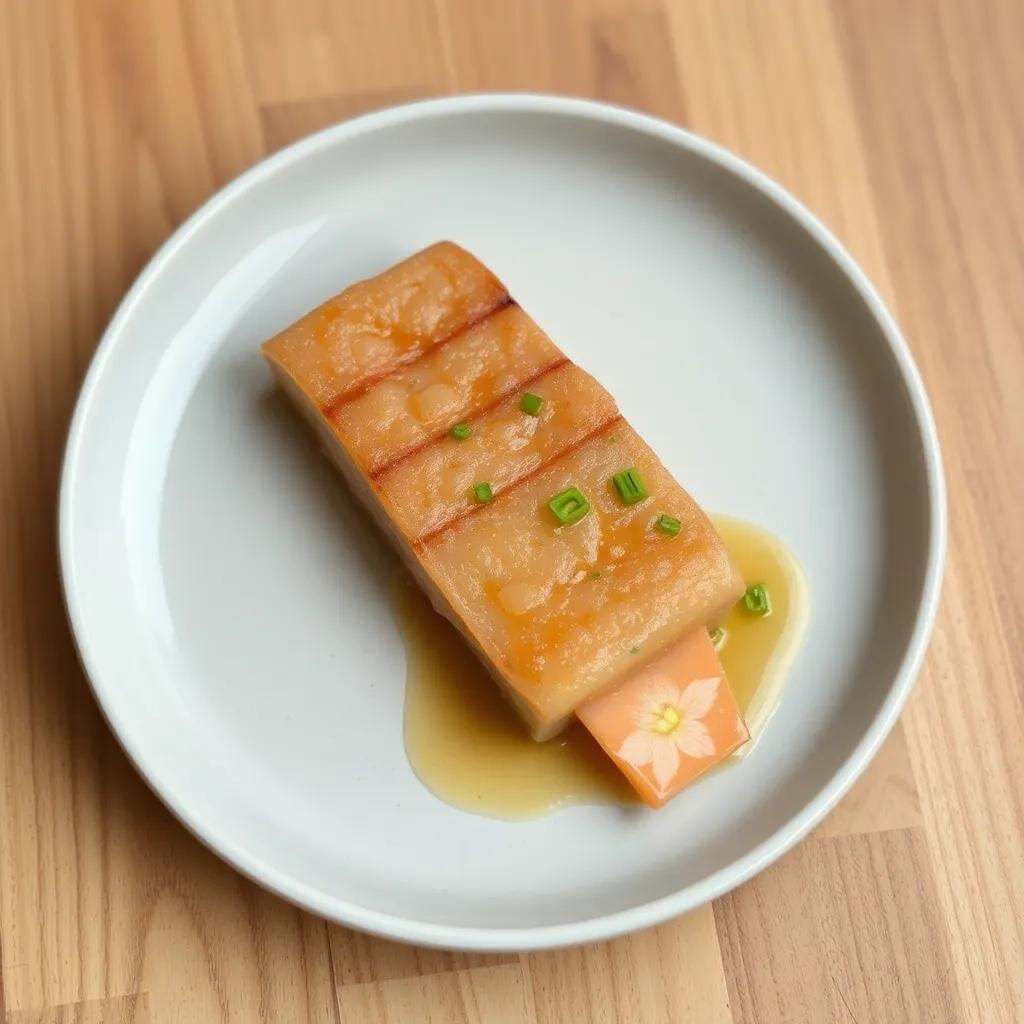
Intro
Whether you’re new to Korean cuisine or a seasoned flavor adventurer, mastering samgyeopsal opens up a world of vibrant tastes and communal dining joy. This easy Korean BBQ pork dish strikes the perfect balance between rich, smoky, and subtly spicy, making it an exciting centerpiece for casual weeknight dinners or festive gatherings alike. Its quick prep and straightforward cooking process mean you can whip up an authentic-feeling meal without hours in the kitchen or complex techniques.
Samgyeopsal is more than just food—it’s an experience. Traditionally enjoyed grilled at the table, it lends itself beautifully to social meals where everyone can participate in assembling their own wraps. Imagine the satisfying sizzle as the pork browns, the aroma filling your kitchen, and the lively conversations that naturally flow when sharing food this hands-on. Whether served for a cozy family dinner, a weekend BBQ with friends, or a lively celebration, this dish encourages connection through flavor and ritual.
The beauty of this recipe lies in its versatility and approachability. It invites you to explore bold Korean flavors while keeping things simple enough for any home cook to master. With just a handful of well-chosen ingredients and minimal fuss, you’ll soon have a crowd-pleasing dish that’s equally at home on a humble weeknight table or as the star of your next get-together. Embrace the joy of grilling, wrapping, and dipping—samgyeopsal is a gateway to delicious discovery and communal feasting.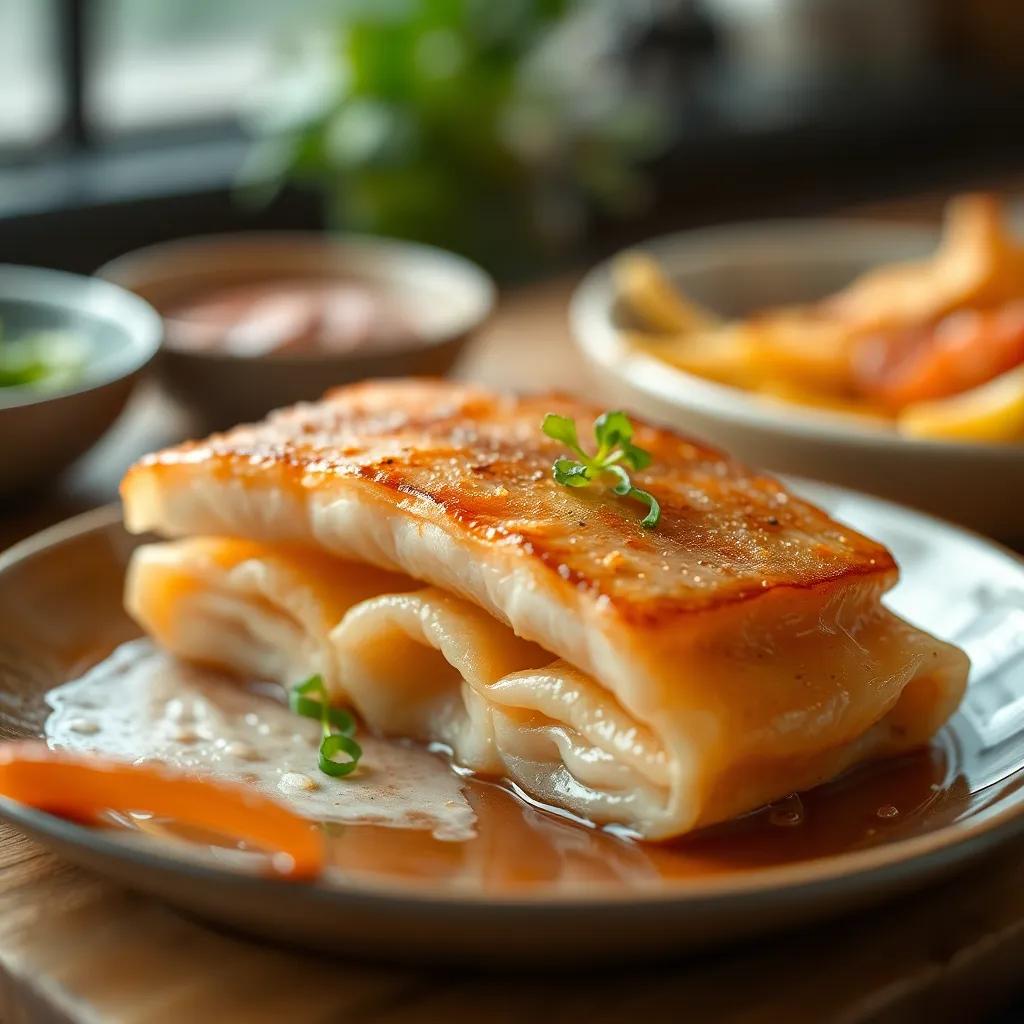
Ingredient Notes
When it comes to crafting an authentic and flavorful samgyeopsal experience, a few key ingredients truly make all the difference. Understanding their unique qualities helps you appreciate the delicate balance of textures and tastes that define this beloved Korean BBQ pork.
Pork belly slices (samgyeopsal)
At the heart of the dish is the pork belly itself—thick, fatty, and richly marbled, it’s what lends samgyeopsal its signature buttery texture and satisfying chew. Choosing fresh, high-quality pork belly is essential. Look for slices with an even ratio of fat to meat; too lean and you lose that luscious juiciness, too fatty and the pieces can become overly greasy. If you can find pre-sliced samgyeopsal from an Asian market, that’s ideal for convenience and authenticity. Otherwise, ask your butcher for thick-cut pork belly slices and slice them yourself at home. For alternatives, pancetta or uncured bacon can mimic the fatty texture, but the smoky nuances and pure pork flavor won’t quite match.
Gochujang (Korean chili paste)
This vibrant red paste is a cornerstone of Korean cooking and a key flavor booster in the marinade. Its complex profile—sweet, spicy, and savory with subtle fermented depth—elevates the pork beyond mere seasoning. When buying gochujang, opt for one with a balanced heat level and visible chili flakes, avoiding overly processed, overly sweet varieties. Since it’s fermented, the paste adds umami that’s hard to replicate. If you don’t have access to gochujang, a blend of miso paste, chili powder, and a touch of sugar can stand in as a makeshift substitute, but expect a milder, less nuanced flavor overall.
Sesame oil
Just a small splash of toasted sesame oil infuses the dish with a fragrant, nutty aroma that complements the pork’s richness perfectly. Unlike regular cooking oils, sesame oil is prized for finishing dishes to add warmth and depth. Since it burns quickly, it’s best added towards the end of cooking or mixed directly into marinades. You’ll want to buy a cold-pressed, toasted variety for the most authentic flavor. If unavailable, a light drizzle of toasted walnut or avocado oil could serve as a mild nutty alternative, but it won’t quite capture that Korean BBQ essence.
Ssamjang (Korean dipping sauce)
Though technically a condiment rather than a core cooking ingredient, ssamjang deserves a special mention because it crowns the entire experience. This thick, savory paste combines fermented soybean paste (doenjang), gochujang, garlic, and sesame oil to deliver bold umami-packed flavor with a spicy kick. It’s the perfect partnership for wrapping pork in a lettuce leaf, adding moisture and complexity. Store-bought ssamjang varies in intensity, so taste before serving and adjust with garlic or a touch of honey if preferred. If you can’t find it ready-made, mixing equal parts miso and chili paste with minced garlic and toasted sesame oil can provide a workable DIY version.
By paying close attention to these standout ingredients, you set yourself up for samgyeopsal that bursts with authentic flavor and irresistible textures. Their quality and interplay bring the dish alive—transforming simple grilled pork into an unforgettable Korean BBQ feast.
Tips & Variations
Achieving perfectly flavorful samgyeopsal starts with a few insider tips that elevate the dish from good to memorable, along with creative twists you can try to make it your own. Here’s how to master this Korean BBQ staple with confidence and flair:
- Choose the Right Cut and Thickness: While traditional samgyeopsal calls for thick, unseasoned pork belly slices, don’t hesitate to experiment with slightly thinner cuts if you prefer quicker cooking or crisper edges. Just keep an eye on the cooking time to avoid drying out the meat, especially if you’re using leaner cuts like pork shoulder or loin as a variation.
- Marinate Strategically: Though authentic samgyeopsal is often grilled without marinade to highlight the natural pork flavor, the marinade in this recipe adds a subtle, balanced kick. For an extra tenderizing boost, add a teaspoon of grated Asian pear or pineapple juice to the marinade—these natural enzymes help break down proteins, resulting in melt-in-your-mouth texture.
- Control the Heat for Perfect Caramelization: Medium-high heat is key to developing that coveted caramelized crust without charring the pork. Using a cast-iron skillet or a heavy grill pan helps maintain even heat. If cooking on an outdoor grill, consider placing the pork on indirect heat first to render fat, then finish over direct flames for smoky char.
- Play with Garnishes and Wrapping: In addition to classic lettuce leaves, try using perilla leaves (kkaennip) for a distinct herbal aroma that cuts through the richness. Add thin slices of raw garlic or spicy pickled vegetables for crunch and contrast. Don’t shy away from mixing ssamjang with a bit of honey or citrus zest for a bright twist on the dipping sauce.
- Common Ingredient Swaps:
– Gluten-Free: Use tamari instead of soy sauce and check that your gochujang is gluten-free (many traditional varieties contain wheat).
– Lower Fat Option: Substitute pork belly with pork collar or shoulder cuts that have less fat but still offer rich flavor.
– Vegan Adaptation: Swap pork for thick slices of king oyster mushrooms, seitan, or marinated tofu. Use a vegan fermented chili paste like fermented red pepper paste and replace ssamjang with a blend of miso, chili paste, and sesame oil.
- Add Depth with Side Dishes: Complement the pork’s richness by serving it with kimchi varieties beyond the classic napa cabbage—try cucumber kimchi for refreshing crunch or radish cubes (kkakdugi) for sweetness and acidity. These banchan (side dishes) create a textural and flavor balance that turns your meal into a true Korean BBQ feast.
- Make It Interactive: Cooking samgyeopsal traditionally involves communal grilling and wrapping. If you’re hosting a meal, set up a tabletop grill or portable burner to keep the pork sizzling and allow guests to customize their wraps with various toppings like sliced chilies, mung bean sprouts, or steamed rice for a participatory experience.
By embracing these tips and variations, you’ll not only nail the classic samgyeopsal flavors but also enjoy countless ways to personalize and adapt the dish—whether for dietary needs, ingredient availability, or simply your adventurous palate. The beauty of samgyeopsal lies in its flexibility: it’s a canvas for flavor enthusiasts ready to savor, share, and experiment.
Leftovers & Storage
Leftover samgyeopsal can be just as delightful the next day when stored properly, allowing you to enjoy the bold flavors without sacrificing quality. To keep your Korean BBQ pork fresh and flavorful, transfer any uneaten portions into airtight containers as soon as the meat has cooled to room temperature. Glass containers with tight-fitting lids are ideal, as they prevent moisture loss and help maintain flavor integrity, but BPA-free plastic containers or heavy-duty resealable freezer bags also work well.
In the refrigerator, samgyeopsal will stay fresh for up to 3 to 4 days. When reheating, try warming the pork gently in a skillet over medium heat to crisp up the edges again, or use a microwave covered loosely with a damp paper towel to prevent drying out. Avoid reheating multiple times, as pork belly can become tough and lose its juicy appeal.
For longer storage, samgyeopsal freezes beautifully. Wrap the cooked pork tightly in plastic wrap before placing it in a freezer-safe container or bag to protect it from freezer burn. Stored this way, it can last up to 2 months in the freezer. When ready to enjoy, thaw overnight in the fridge and reheat using one of the methods above.
If you’re meal prepping samgyeopsal for a busy week, portion the pork separately from fresh components like lettuce leaves and ssamjang dipping sauce. Lettuce will wilt quickly when refrigerated, so it’s best picked up fresh the day you plan to eat. Similarly, store ssamjang in a small jar or container and scoop out just what you need to keep it vibrant and unspoiled.
Transporting samgyeopsal for packed lunches or picnics is also straightforward. Pack cooled pork belly slices in a well-sealed container and keep them chilled with an ice pack until mealtime. Carry fresh lettuce leaves and dipping sauces in separate containers to assemble wraps just before eating—this preserves the crispness and ensures each bite stays perfectly balanced.
By handling leftovers with care, your samgyeopsal experience extends beyond a single meal, making it a versatile dish for quick lunches, snackable bites, or even a flavorful addition to salads or rice bowls later in the week.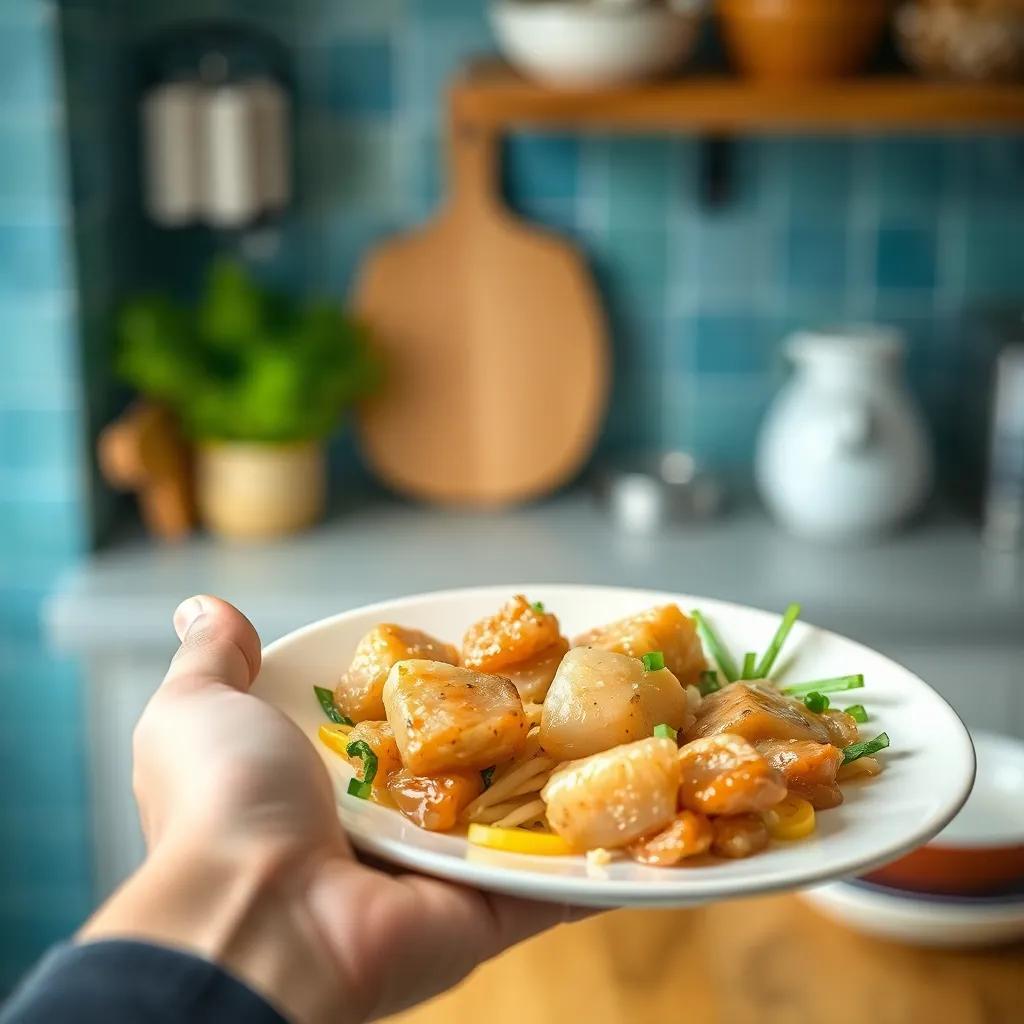
Behind the Recipe
Samgyeopsal, meaning “three-layered flesh,” is a dish steeped in both history and communal tradition in Korea. Its roots trace back to humble Korean households where pork belly, an inexpensive and flavorful cut, became a beloved staple. The practice of grilling thick slices of pork belly over charcoal or gas grills at the table emerged as an accessible, interactive way for families and friends to gather, share food, and connect. This recipe captures that convivial spirit, transforming a simple cut of meat into a centerpiece of warmth and togetherness.
Historically, samgyeopsal gained popularity in South Korea during the 20th century amid rapid economic growth. As pork became more affordable, grills sprouted up in homes and restaurants alike, marking a shift toward casual, hands-on dining experiences. The ritual—grilling the pork, wrapping it with fresh lettuce, dipping in ssamjang, and layering bites with garlic and chili—reflects Korean values of harmony and balance in flavor and texture, as well as communal enjoyment.
On a personal note, mastering samgyeopsal has always been a gateway to inviting loved ones into the kitchen and dining table. For many, including myself, it evokes memories of lively gatherings where cooking together makes the meal as special as the food. The ease of preparation combined with the rich interplay of smoky, spicy, and fresh flavors turns any ordinary meal into a celebration of Korean culinary culture and friendship.
This recipe marries tradition with simplicity—embracing authentic elements while streamlining the process for home cooks who want an approachable, flavorful introduction to Korean BBQ pork. By preparing samgyeopsal this way, you’re not just making dinner; you’re honoring a centuries-old social practice that invites connection through shared tastes, textures, and stories.
FAQ
Can I use a different cut of pork if I don’t have samgyeopsal (pork belly)?
What’s the best way to store leftover cooked samgyeopsal?
Can I freeze marinated pork belly for later use?
Are there vegetarian or plant-based alternatives for this recipe?
What sides or garnishes work best with samgyeopsal to enhance the experience?
Can I prepare samgyeopsal indoors without a grill?
How can I adjust the recipe for a spicier or milder taste?
Enjoy Your Meal!
Mastering samgyeopsal opens the door to a deliciously interactive Korean BBQ experience right in your own kitchen. With its perfect balance of savory pork, fresh accompaniments, and simple yet bold flavors, this recipe is a surefire way to bring friends and family together around the table — no matter your cooking skill level.
Give it a try, and don’t be shy about making it your own! We’d love to hear how your samgyeopsal feast turns out, so please drop a comment, share your favorite tweaks, or rate the recipe below. Happy grilling and enjoy every flavorful bite!










